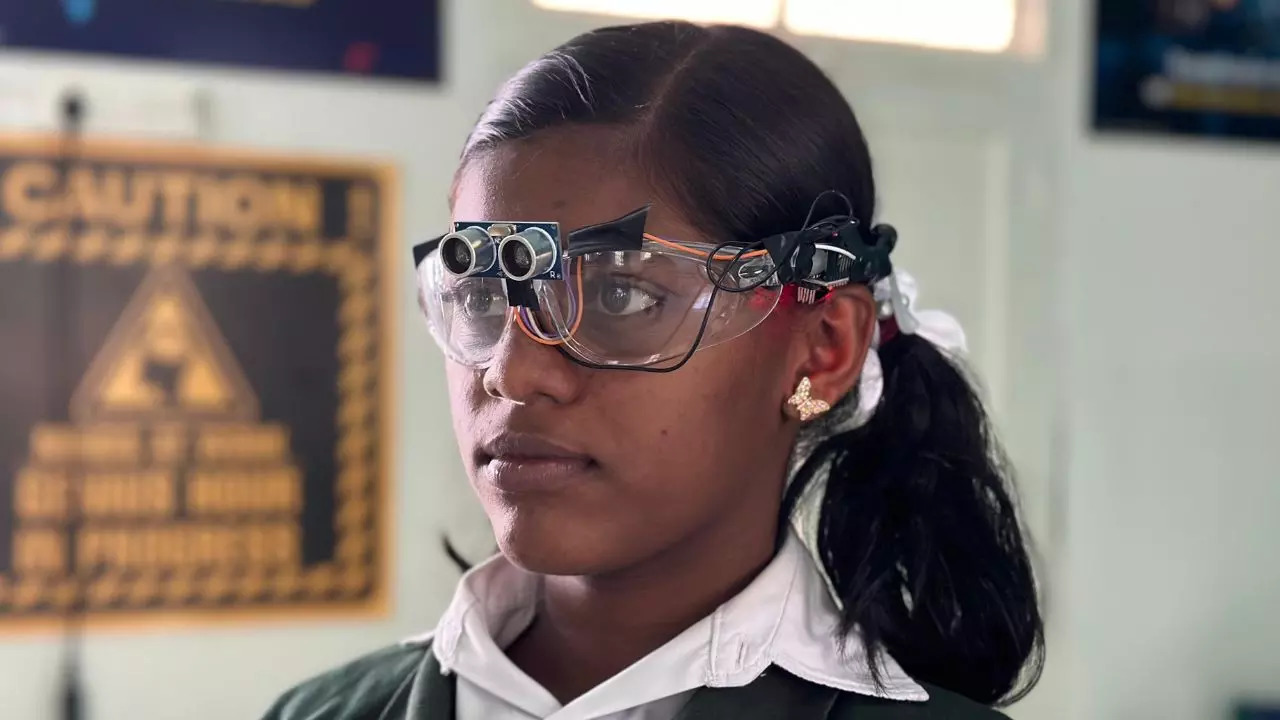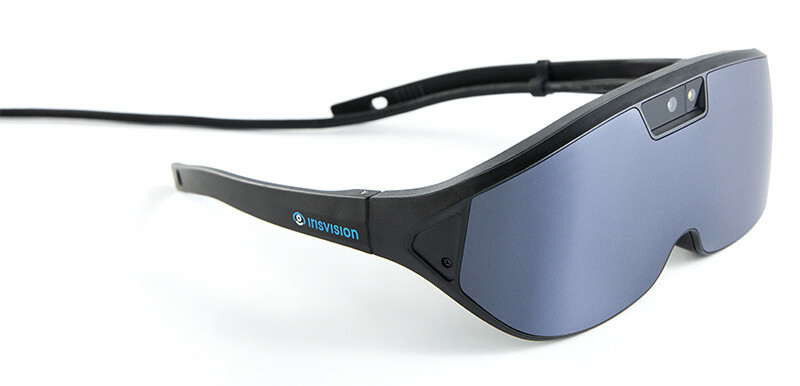Cutting-edge Solutions in Assistive Modern Technology for Visual Problems
The landscape of assistive modern technology for aesthetic impairment is progressing rapidly, presenting a variety of innovative remedies that boost ease of access and self-reliance. From sophisticated smart device applications that facilitate navigation to wearable gadgets made for real-time assistance, these devices are improving the experiences of those with aesthetic impairments. Furthermore, the assimilation of clever home modern technologies and academic sources has the potential to cultivate higher area interaction. However, the effects of these improvements elevate essential inquiries regarding their ease of access and effectiveness in varied contexts, calling for a more detailed assessment of their more comprehensive effect.
Innovations in Smart Device Applications
Over the last few years, improvements in smartphone applications have actually significantly transformed the landscape of assistive technology for individuals with aesthetic impairments. These applications leverage the effective sensors and capacities of modern smart devices to provide individuals with tools that improve freedom and availability in their daily lives.
Remarkable amongst these technologies are applications made for object recognition, which make use of the smart device's electronic camera to recognize products and provide spoken descriptions. Such attributes equip users to navigate their settings extra successfully, whether identifying products in stores or finding individual valuables in your home. In addition, text-to-speech applications have actually enhanced significantly, enabling customers to record printed text through their device's video camera and receive split second audio feedback, therefore facilitating reading and understanding.
Community-driven applications have cultivated social interaction and source sharing among people with visual disabilities, creating a supportive network that improves their quality of life. Generally, smart device applications have come to be indispensable allies in promoting freedom and accessibility for individuals with aesthetic problems.
Wearable Devices for Navigation
Wearable tools for navigation have actually become a groundbreaking option for people with aesthetic problems, supplying hands-free aid that boosts flexibility and orientation. These devices usually use innovative innovations, consisting of GPS, ultrasonic sensors, and expert system, to give real-time responses and instructions to individuals as they browse their setting.
One significant example of wearable navigation technology is wise glasses, which can spot challenges and relay auditory or haptic responses to the wearer, allowing for risk-free and efficient motion in various settings. Various other devices, such as belts and vests geared up with sensing units, can similarly notify customers of their surroundings by giving notifies concerning nearby items or adjustments in terrain.
Furthermore, many wearable gadgets incorporate with smartphone applications, allowing customers to customize their navigation choices and obtain tailored path suggestions. This personalization can substantially boost the user experience, equipping people to travel with greater confidence and freedom.
As innovation continues to create, the possibility for wearable navigation tools to improve the quality of life for individuals with visual disabilities remains considerable, leading the way for more available and comprehensive settings.
Smart Home Modern Technology Assimilation

Additionally, wise appliances geared up with tactile user interfaces or acoustic responses give intuitive interactions that cater particularly to the requirements of those with aesthetic disabilities. For example, clever fridges can announce their contents and expiration dates, while smart ovens can direct individuals with the cooking process with audio directions.
Home automation systems, such as smart doorbells and security cameras, offer assurance by permitting customers to obtain signals and accessibility live feeds by means of their mobile phones, improving personal safety (AI-powered visual aids). Additionally, integration with smartphones and tablets makes sure that individuals can manage their home environment from anywhere within their properties
As clever home innovation continues to evolve, it holds the potential to change the living experiences of individuals with visual problems, cultivating self-reliance and improving lifestyle in a significantly connected world.

Educational Equipment and Resources
Accessibility to reliable instructional devices and sources is crucial for individuals with visual impairments, as it empowers them to engage fully in their learning experiences. Various assistive technologies have been developed to enhance accessibility and foster independent learning. Screen readers, for instance, transform message right into speech, enabling trainees to gain access to digital web content Get the facts seamlessly. AI-powered visual aids. In addition, refreshable braille displays give tactile comments, making it easier for learners to connect with composed material.
Furthermore, instructional software application especially made for visually damaged individuals offers attributes such as high-contrast settings and adjustable text sizes. These devices fit diverse learning styles and make sure that pupils can tailor their academic experience to their demands.
Furthermore, accessibility to audio books and digital libraries increases the series of offered discovering products, enabling students to discover subjects comprehensive without the restrictions enforced by conventional print sources. Collaborative systems that integrate availability features also facilitate team projects, ensuring that aesthetically impaired students can contribute meaningfully together with their peers.
Neighborhood Support and Engagement
A durable network of area support and engagement is important for individuals with aesthetic problems, promoting a comprehensive setting where they can flourish. Neighborhood companies, local campaigning for groups, and volunteers play a critical duty in supplying sources, info, and friendship, which are vital for enhancing the quality of life for those affected by aesthetic problems.
Interaction activities such as workshops, social events, and support system not just help with skill development however additionally promote social communication, minimizing sensations of seclusion. These campaigns urge people to share successes, challenges, and experiences, therefore enhancing community bonds. Furthermore, partnerships with neighborhood companies can result in better accessibility in public rooms, additionally incorporating people with aesthetic problems into the community.
Technology additionally enhances area engagement via on-line systems that provide digital support system and sources, enabling people to link no matter of geographical obstacles. By harnessing both digital and in-person solutions, areas can create an extensive support network. Ultimately, cultivating collaboration among numerous stakeholders-- consisting of families, educators, and medical care experts-- makes sure that individuals with aesthetic impairments get the alternative assistance needed to navigate life properly and with dignity.
Conclusion
Innovative services in assistive innovation for aesthetic disability dramatically improve the quality of life for people facing these challenges. The integration of smart device applications, wearable tools, smart home modern technology, and academic tools promotes higher self-reliance and accessibility. Moreover, neighborhood support and engagement further empower aesthetically impaired people, promoting inclusivity and involvement in numerous aspects of life. Jointly, these developments not only transform daily experiences but likewise lead the way for a much more fair culture.
The landscape of assistive technology for aesthetic problems is advancing swiftly, presenting a variety of innovative remedies that improve access and independence. Community-driven applications have fostered social interaction and resource sharing amongst individuals with visual impairments, developing a helpful network that enhances their quality of life. On the whole, mobile phone applications have come to be crucial allies in promoting autonomy and access for individuals with visual problems.
Numerous people with aesthetic impairments are locating higher freedom with the integration of clever home technology.Cutting-edge options in assistive technology for aesthetic problems significantly boost the high quality of life for individuals facing these challenges.